Year 4 Fractions, Decimals and Percentages
Adding Fractions and Mixed Numbers with the Same Denominator
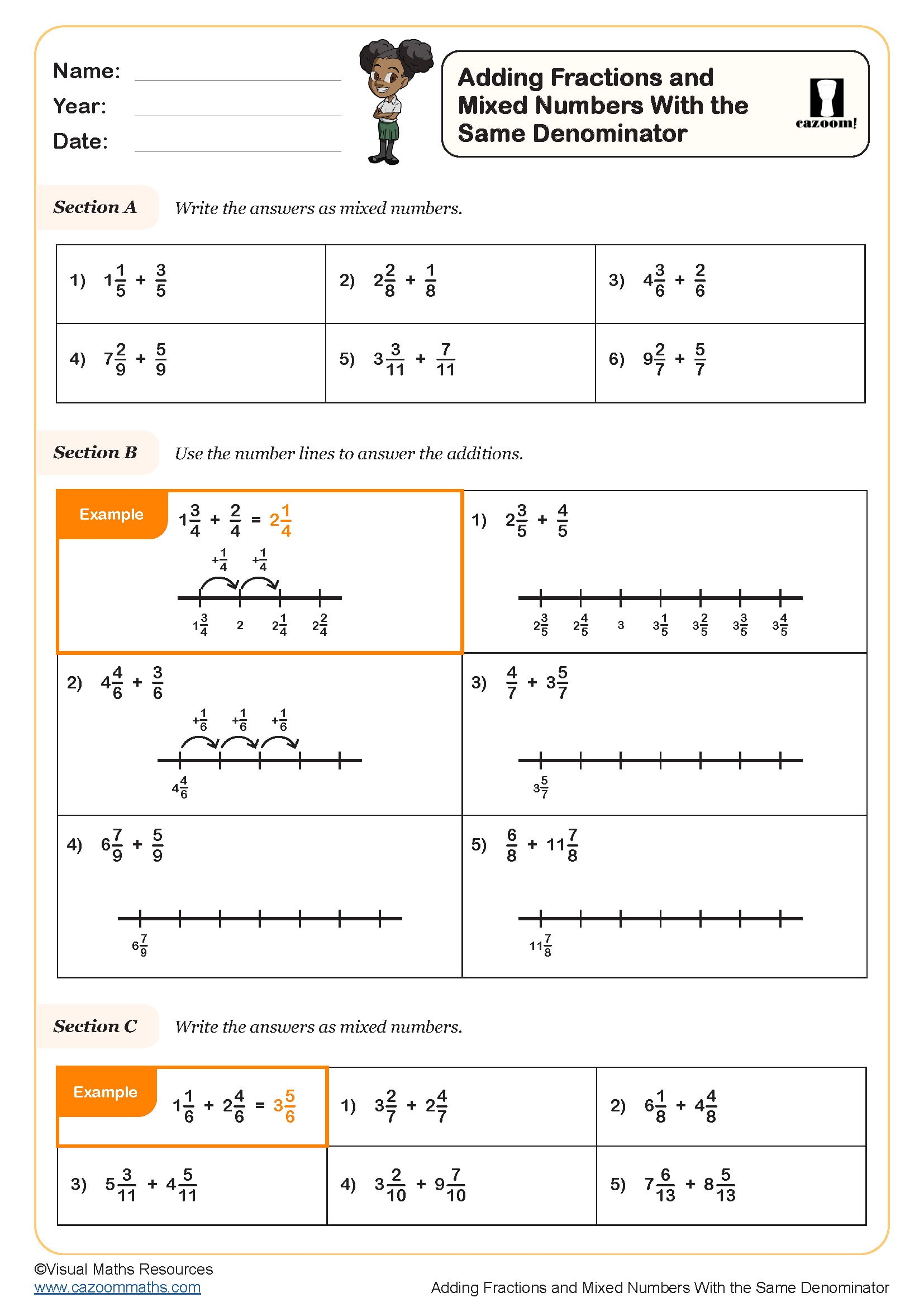
Comparing Decimals (A)
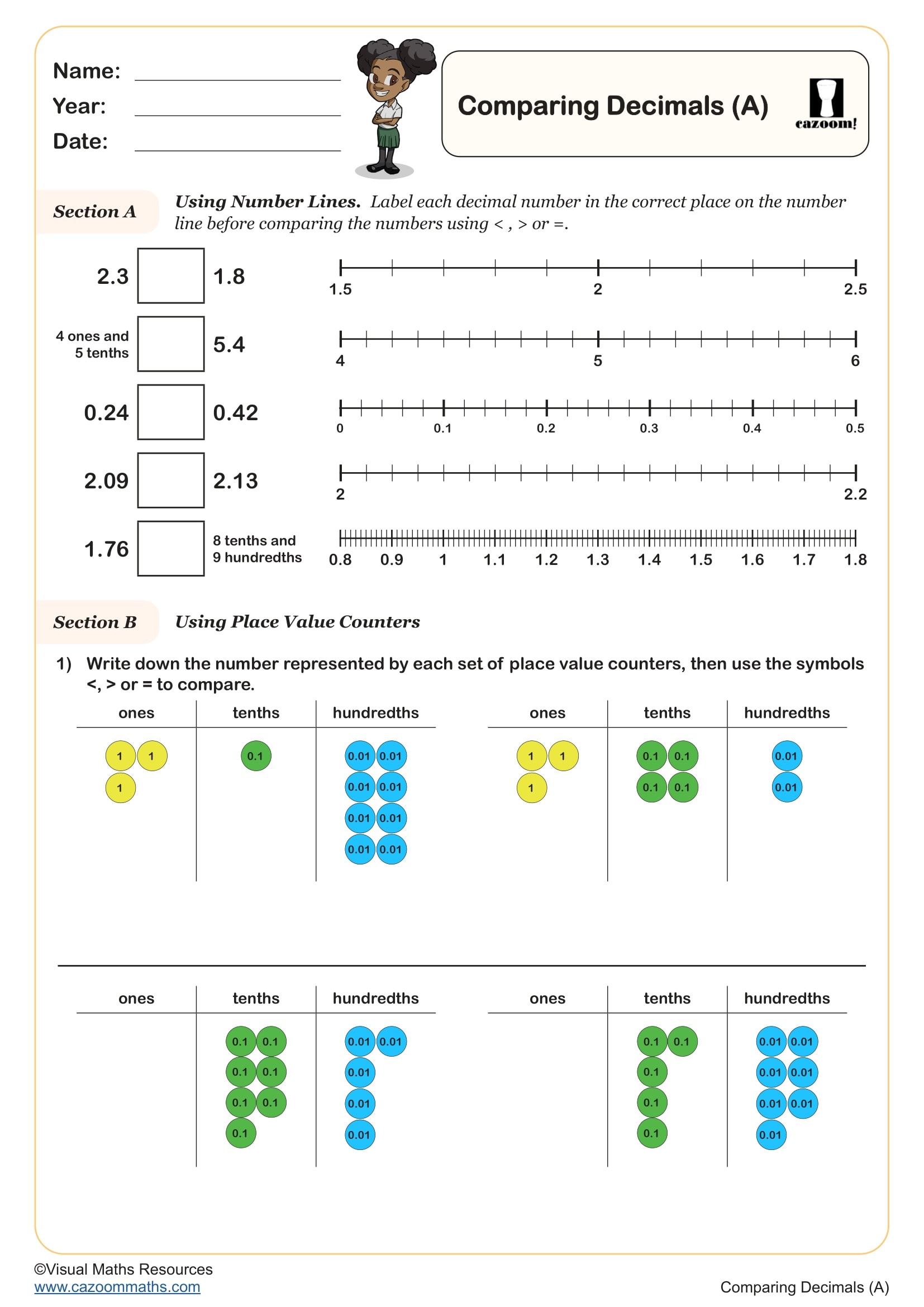
Divide 1 and 2 Digit Numbers by 10
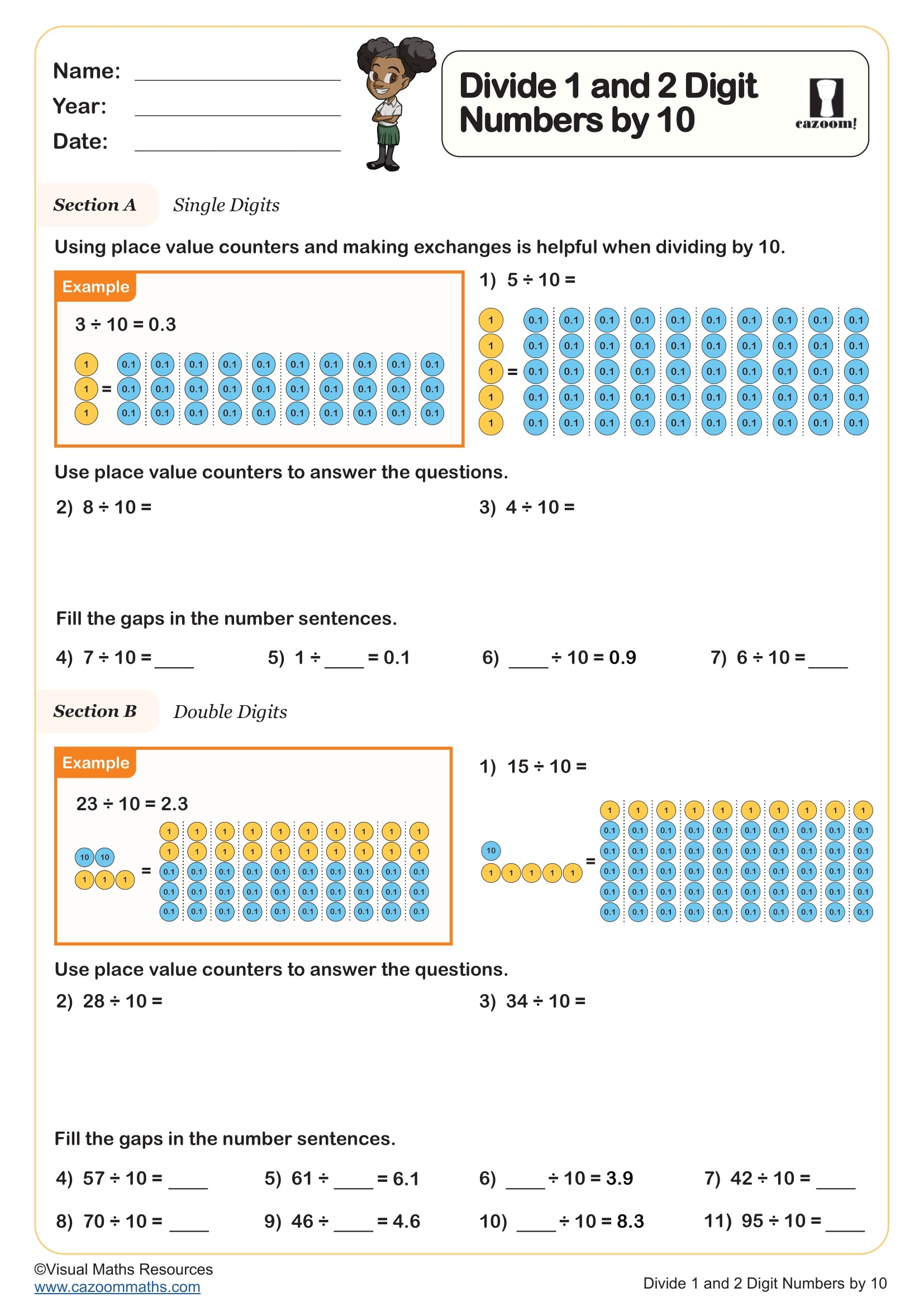
Divide 1 and 2 Digit Numbers by 100
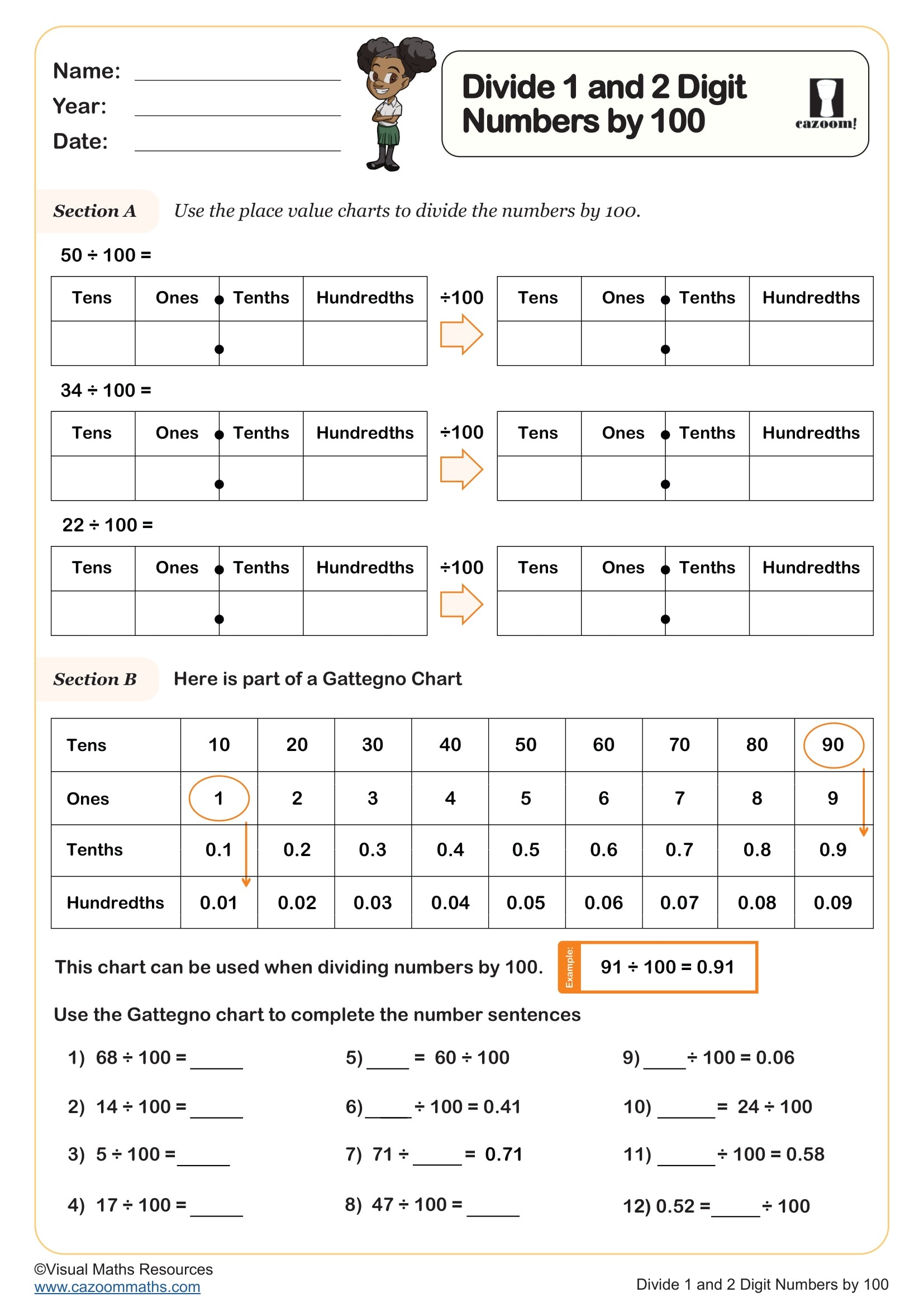
Equivalent Fractions Using Bar Models (A)
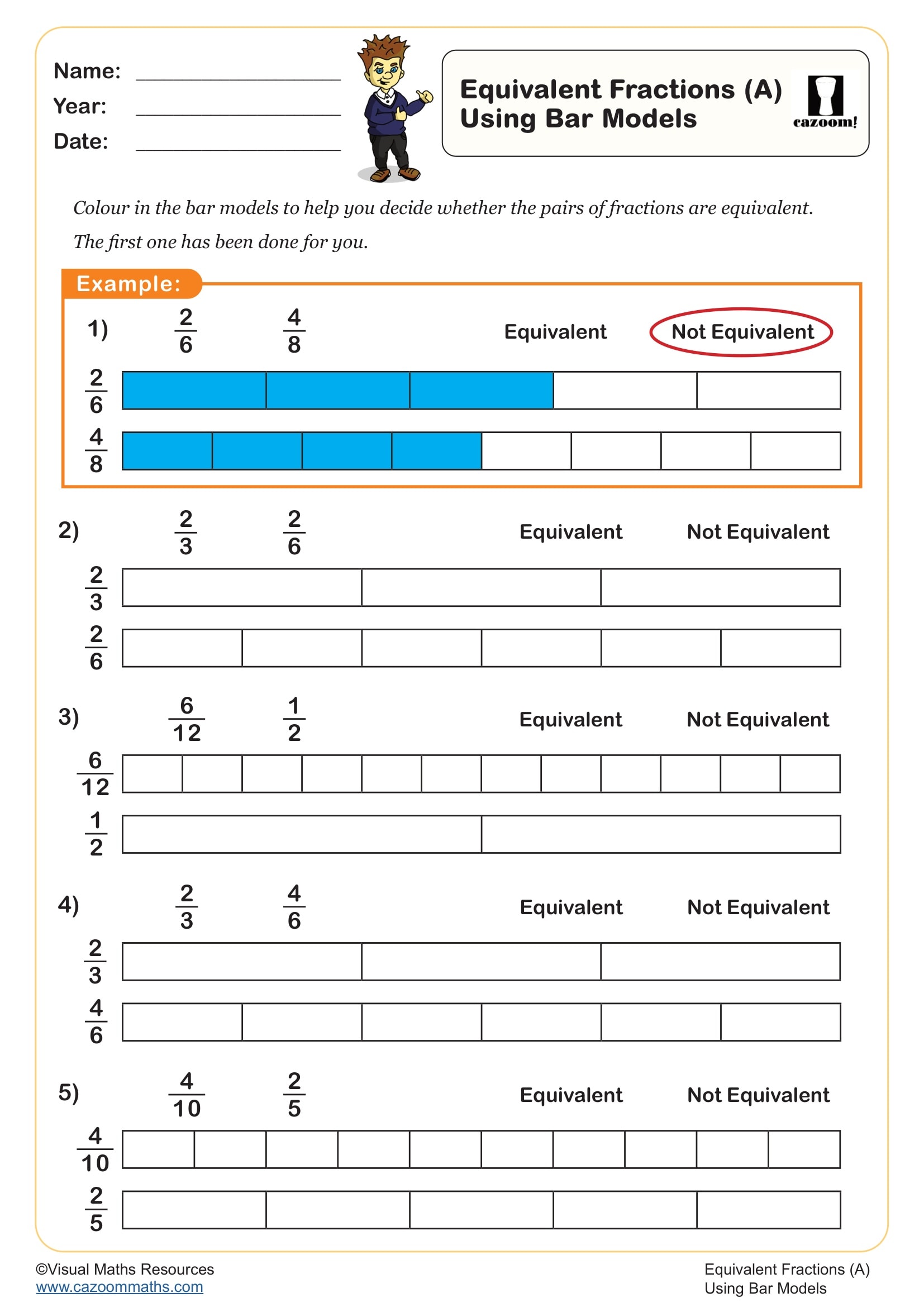
Fractions Greater Than One - Improper Fractions
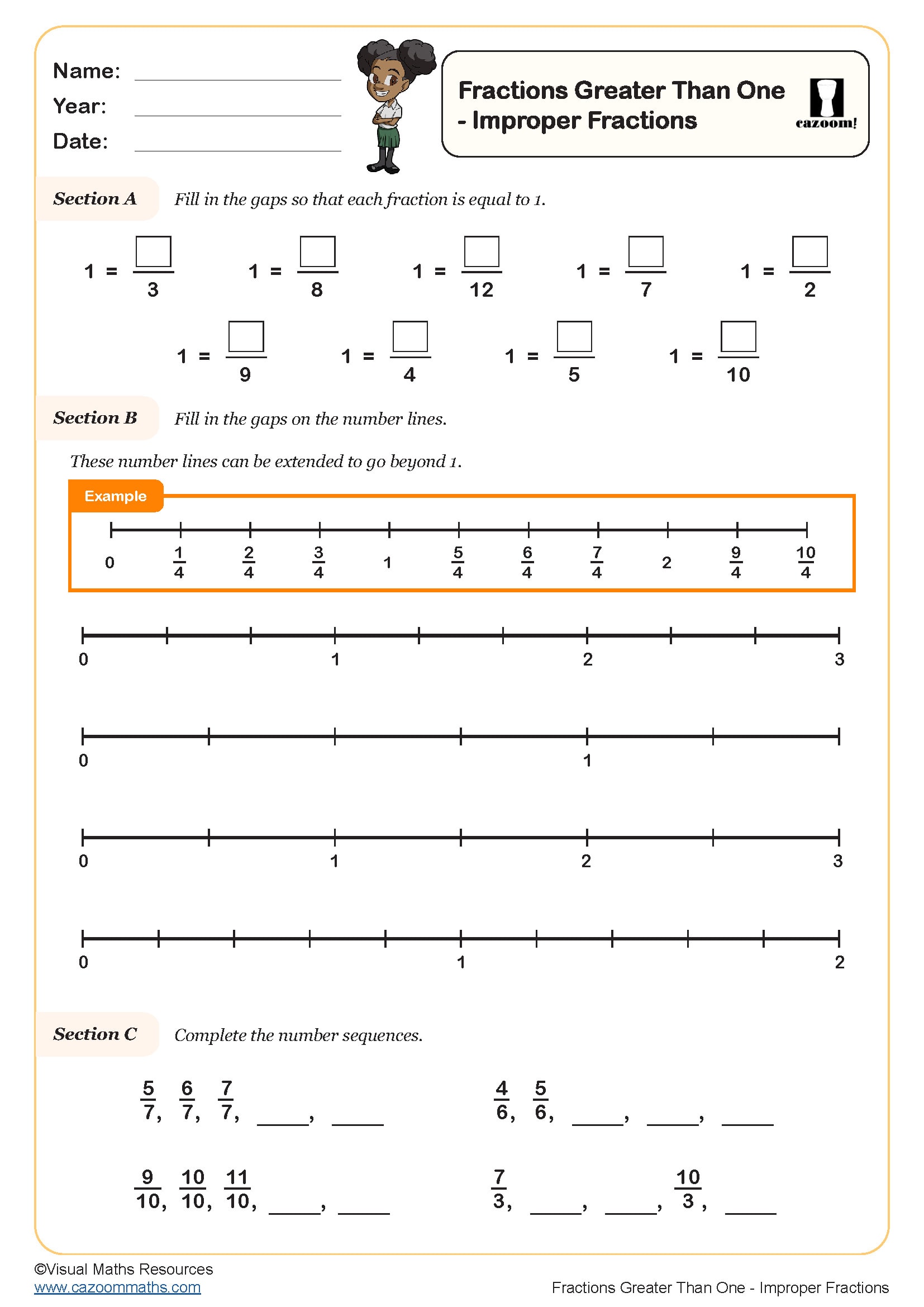
Fractions Greater Than One - Mixed Numbers
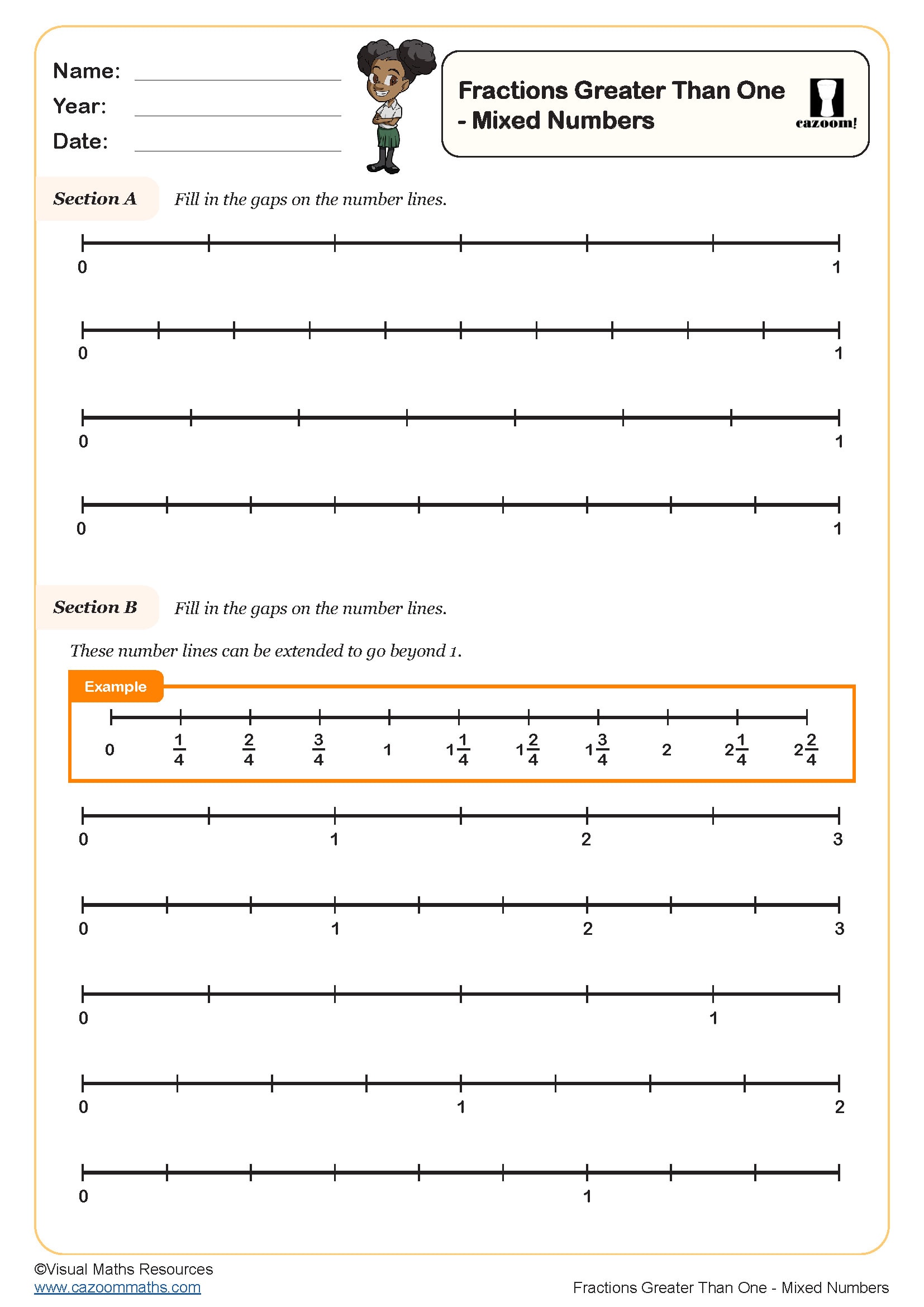
Halving 2 Digit Even Numbers
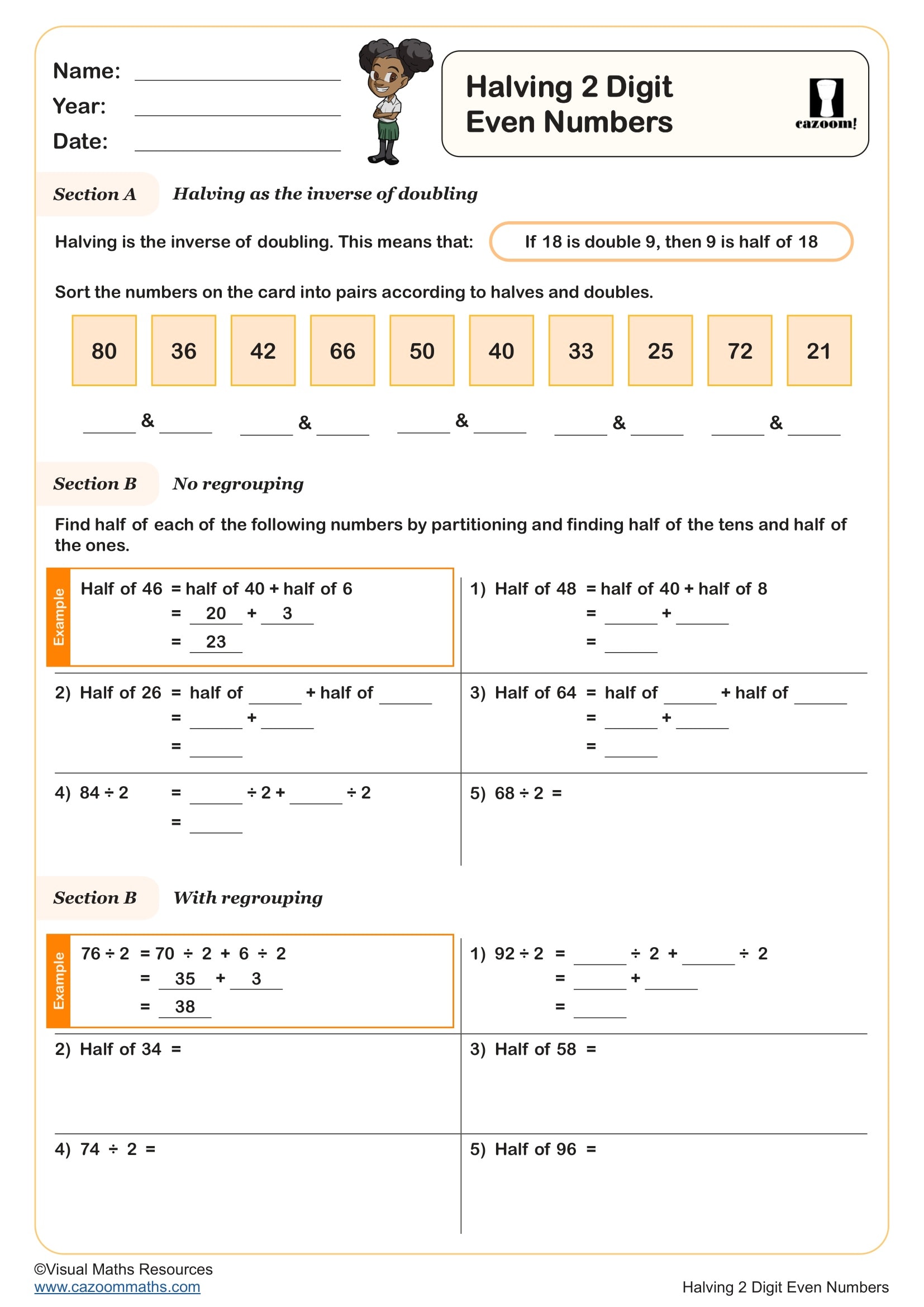
Halving Odd Numbers by Halving One Less

Making One Using Decimals and Fractions (A)

Making One Using Decimals and Fractions (B)

Partitioning Decimals - Tenths and Hundredths (B)

Partitioning Mixed Numbers

Solve Problems Involving Decimals

Subtracting Fractions and Mixed Numbers with the Same Denominator

Tenths and Hundredths Using the Hundred Square

Tenths as Fractions and Decimals (A)

Tenths as Fractions and Decimals (B)

Understanding the Whole

Whole Number and Improper Fraction Equivalence

Build a Strong Foundation in Fractions, Decimals, and Percentages With Our Printable PDF Resources
Our worksheets help students strengthen their understanding of key concepts such as equivalent fractions, understanding the whole, whole number and improper fraction equivalence, comparing decimals, decimal place value, and many more. Every resource is created in ready-to-use, printable PDF format and features a clear layout, visual models, and real-world contexts that bring these mathematical ideas to life.
Clear Visuals and Step-by-Step Support for Every Learner
The core concepts of Fractions, decimals, and percentages are simply three different ways of expressing the same mathematical idea, that is, parts of a whole. Fractions are represented by numbers like 1/2 or 3/4 (think of slicing a pizza), while decimals use a decimal point, such as 0.5 or 0.75, and on the other hand, percentages include a per cent sign, like 50% or 75%. They're all connected because 1/2 = 0.5 = 50%, which makes them incredibly useful for everything from cooking measurements to understanding test scores.
Your primary school students progress from recognising and creating unit fractions to comparing and ordering fractions with the same denominator. Your KS2 children particularly enjoy the pattern-spotting activities and the connection between fractions and familiar measurement contexts.
Strengthen Reasoning and Prepare for Secondary School and Beyond
Your young learners in primary school who consistently engage with fractions and decimals are more prepared for upper KS2 topics, such as ratio, proportion, and percentage calculations. Our carefully sequenced worksheets allow learners to consolidate essential skills and make meaningful connections between different representations of parts and wholes.
Focused skills include:
• Placing fractions and decimals accurately on number lines
• Identifying equivalent fractions (e.g. 0.5 = 1/2 = 50%)
• Reasoning about size and value with visual models
• Solving real-world word problems using fractions and percentages
• Developing fluency in converting between forms
Making Maths Real: Fractions and Percentages in Everyday Life
Maths comes to life when students see it in action beyond the classroom. Our worksheets include relatable, cross-curricular tasks that show how fractions, decimals and percentages appear in everyday life—helping students appreciate the usefulness and relevance of what they’re learning.
Real-world connections include:
• Cooking and baking with fractional measurements
• Understanding discounts and percentages in shopping
• Dividing artwork into fractional designs in art class
• Using decimal values in money and budgeting
• Measuring liquids and solids in science experiments
• Interpreting sports scores and statistics in PE